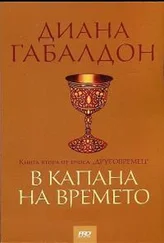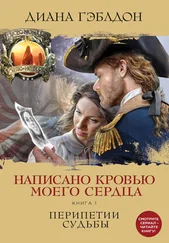Colonel Johnsonof the Southern Department (Indian agents)—There were two Johnsons who headed the department, one succeeding the other, though I don’t think they were related.
Non-English Figures of Speech
a vos souhaits / a tes amours —The traditional French Canadian blessing upon hearing someone sneeze. Translated literally, it means “to your dreams / to your loves.” (A little more graceful than “Gesundheit” or the onomatopoetic “Blesshu” perhaps …)
stercus —“Excrement” (Latin).
filium scorti —“Son of a bitch” (Latin).
cloaca obscaena —“Obscene sewer” (Latin).
“tace is the Latin for a candle”—This is a common tag in eighteenth-century conversation among the upper classes (who spoke Latin). “Tace” is the imperative meaning “keep silent,” and the candle is symbolic of light. Ergo, the expression means (essentially) “keep it dark”—in other words, “be discreet and don’t say anything regarding what we’ve been talking about.”
pozegnanie —“Farewell” (Polish).
Gáidhlig phrases and figures of speech are defined in the text.
William Butler Yeats—The Lake Isle of Innisfree
I will arise and go now, and go to Innisfree,
And a small cabin build there, of clay and wattles made;
Nine bean-rows will I have there, a hive for the honey-bee,
And live alone in the bee-loud glade.
And I shall have some peace there, for peace comes dropping slow,
Dropping from the veils of the morning to where the cricket sings;
There midnight’s all a glimmer, and noon a purple glow,
And evening full of the linnet’s wings.
I will arise and go now, for always night and day
I hear lake water lapping with low sounds by the shore;
While I stand on the roadway, or on the pavements grey,
I hear it in the deep heart’s core.
Miscellany
Shreddies—RAF-issue underwear. So called, apparently, because the woven pattern of the cloth from which they were made strongly resembled the appearance of a Shredded Wheat biscuit.
Part Three’s Headingis derived from a quote by the novelist Florence King:
“In social matters, pointless conventions are not merely the bee sting of etiquette, but the snake bite of moral order.”
—FLORENCE KING
Black Freemasons—At one point, Claire wonders whether there are black Freemasons. In fact, there were. Prince Hall, a well-known abolitionist and black leader, established Prince Hall Freemasonry (Boston).
Haitian Navy
You see frequent references in historical accounts to the “Haitian Navy” Chasseurs-Volontaires, who fought with the Americans during the Siege of Savannah. In fact, Haiti didn’t exist as a polity at this point in history, and these black volunteers were actually from Saint-Domingue (later the Dominican Republic) and other places, and their background is fascinating, but not something I was able to go into during my discussion of the Battle of Savannah. The following details, however, are from the blackpast.org website and give a fuller picture:
D’Estaing’s troops were mainly composed of colonial regiments coming from various locations such as Guadeloupe, Martinique, and Saint-Domingue. The 800 men from the French Caribbean colonies were organized into a regiment called Chasseurs-Volontaires de Saint-Domingue. These soldiers were des gens de couleurs libres (free men of color) who voluntarily joined the French colonial forces. The gens de couleur were mixed-race men of African and European origin from Saint-Domingue. They were born free and thus were distinct from free slaves, or affranchise, who were born enslaved or became enslaved during their lives and then freed themselves or were freed. This distinction allowed the gens de couleur a higher social and political role in the French colonial West Indies. According to the 1685 French Black Code, they had the same rights and privileges as the white colonial population. In practice, however, strong discrimination by white French colonial residents impeded the gens de couleurs from fully exercising them.
Cultures and Language
This is not the time or place to discuss the portrayal of cultures in fiction, save to say that
No two people who belong to a culture experience it in the same way, and
If writers felt constrained to write only about their own experience, culture, history, or background … libraries would be full of dull biographies, and a lot of what makes a culture—the variety and vigor of its art—would be lost, and the culture would die.
That said, when you write about anything outside your own personal experience, you need the assistance of other people, whether you get it from books (necessary, if you’re writing about historical situations and events) or from personal stories and advice.
During the last thirty-three years, I’ve had the good luck to come across a number of kind and helpful people who were more than willing to advise me about the details of their own culture (as experienced by them), and consequently, I think the various portrayals of those cultures have deepened and improved over the course of the writing of these books. I hope so.
When this happens, though, naturally details will vary, and as you acquire more contacts and more knowledge, you’ll run into some conflicts between accounts. Given that you really can’t go back and revise major events and characters in an earlier book, the best you can do is to adjust the current writing so far as is possible, and use the improved information when writing the next book.
In the final phases of writing Go Tell the Bees That I Am Gone, I had the serendipitous honor of meeting kahentinetha bear, an eighty-two-year-old Mohawk activist, who was more than helpful in supplying me with cultural details, as well as Eva Fadden, the Mohawk-language consultant to the Outlander TV show. Eva and her family are the curators of the Six Nations Iroquois Cultural Center (www.6nicc.com). Both these ladies gave me fascinating information—some of which was at odds with historical accounts (all written by non-Mohawk people) that I’d used in previous books. So I used these ladies’ helpful information to the greatest extent possible, and will continue to apply it (and whatever further advice they and other people give me) in future books.
As a brief example, here is kahentinetha’s [3] fn3 kahentinetha (her name means “she makes the grass move”) informs me that the Mohawk don’t use capitalization, though she makes an exception for her blog, Mohawk Nation News, in order to make it more accessible to a general readership (www.mohawknationnews.com).
description of naming, which doesn’t agree with the naming of Ian Murray’s son in the novels. One could argue that the circumstances were quite different and that the people involved were connected with Joseph Brant and thus not living entirely within the normal cultural environment, and I think that’s valid. But I did want to provide kahentinetha’s information, just as illustration (and in thanks for her very elegant commentary):
Prayed—we don’t pray like Christians. We gather together in our clan and describe the dream. We do not interpret the dream. We are to wait for the next dream and a sign that will give the meaning to the initial dream. Also the name is given by the people and the baby is presented to all the clans in the longhouse. When the person dies, the last night before he is buried, there is a ceremony to take back the name so he or she leaves without it. Now somebody else can use it. No two persons in the world can have the same name. The oldest person with the name can keep it but the younger person has to go back to the longhouse, wear new clothes and receive a new name.
Читать дальше

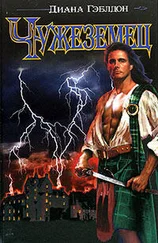
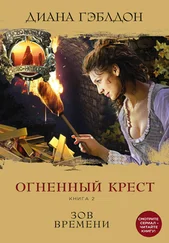

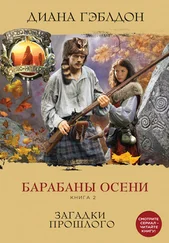
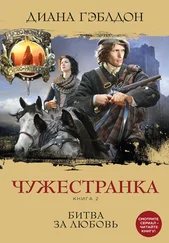
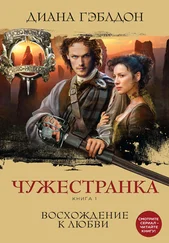



![Диана Гэблдон - Дыхание снега и пепла. Книга 2. Голос будущего [litres]](/books/421947/diana-gebldon-dyhanie-snega-i-pepla-kniga-2-golo-thumb.webp)
